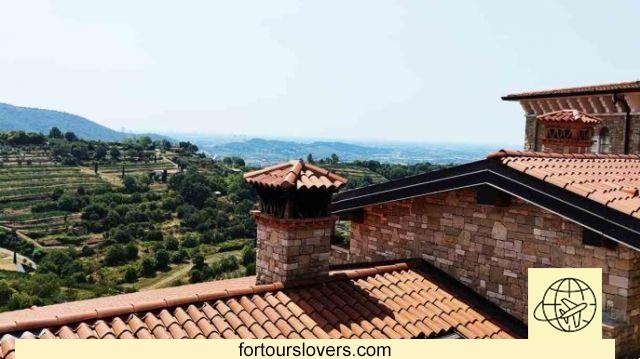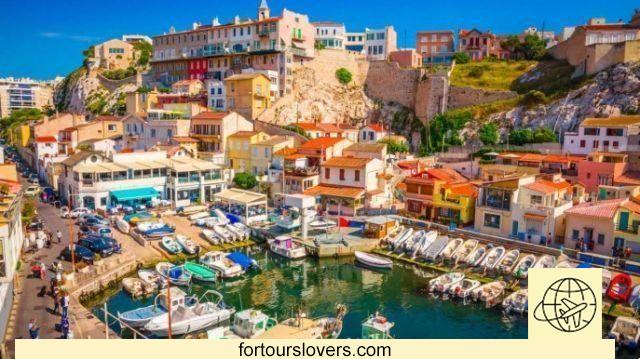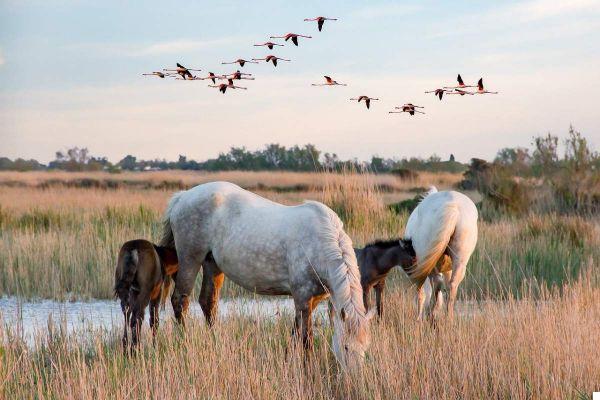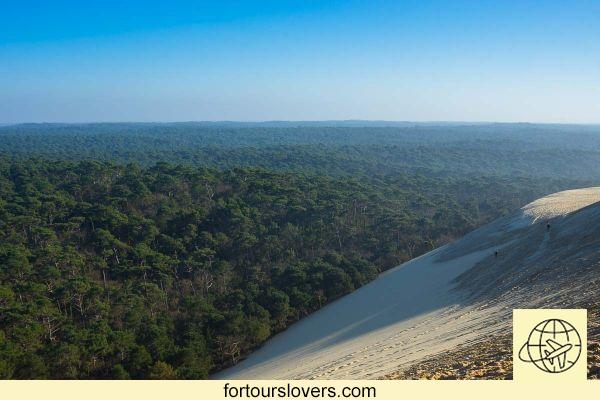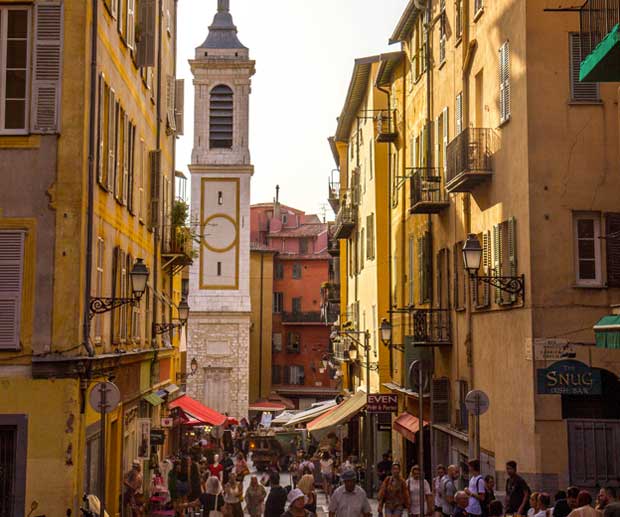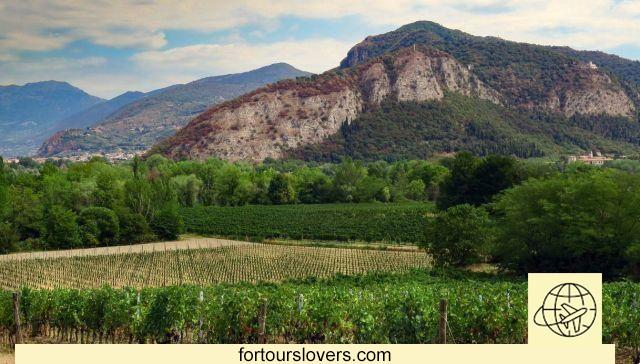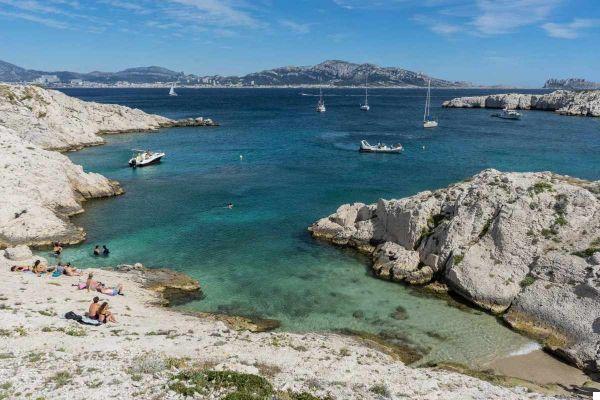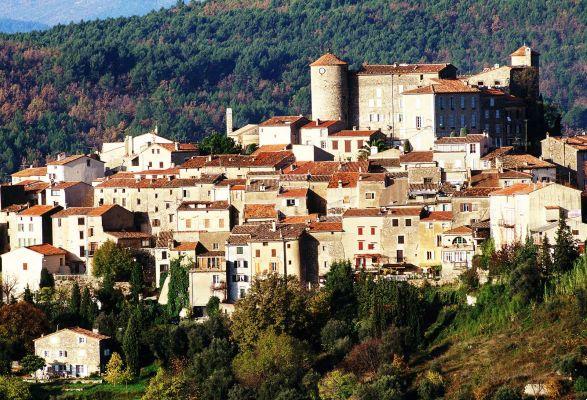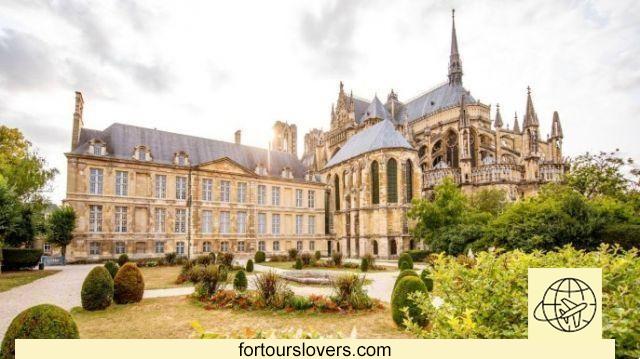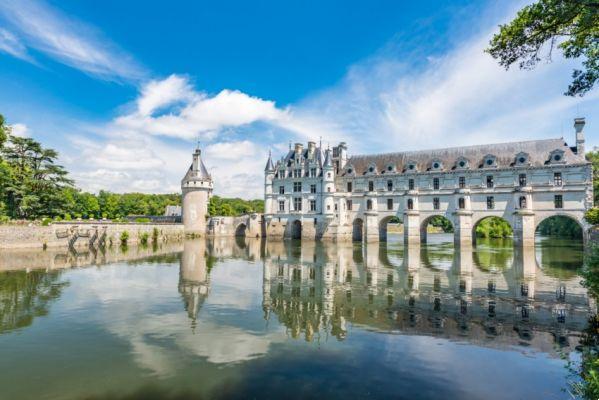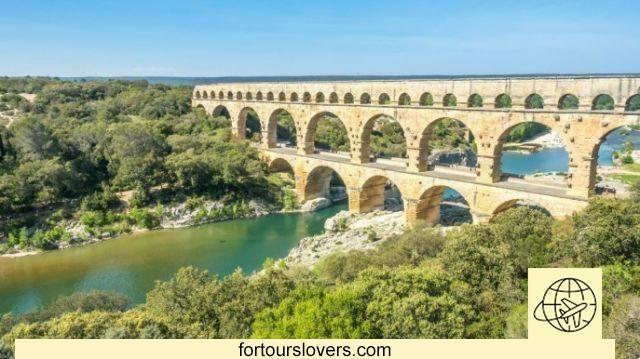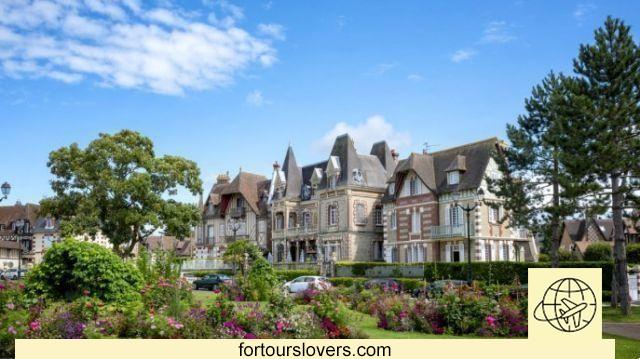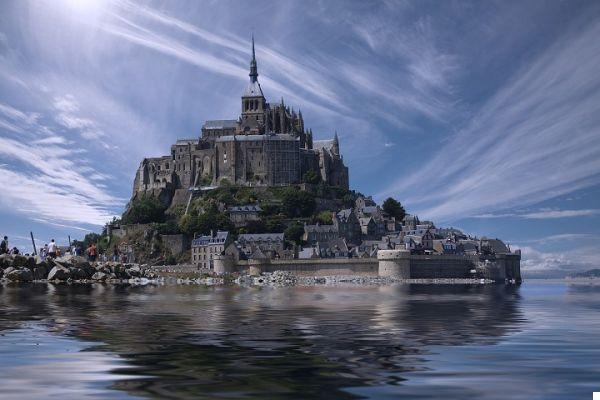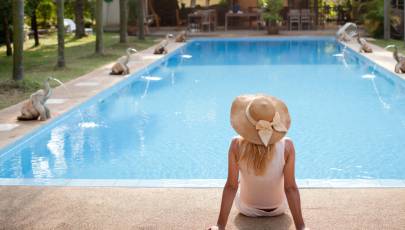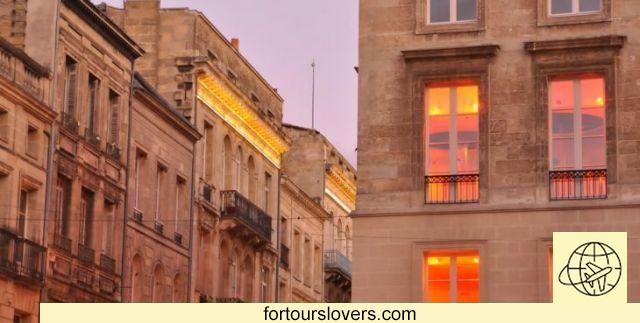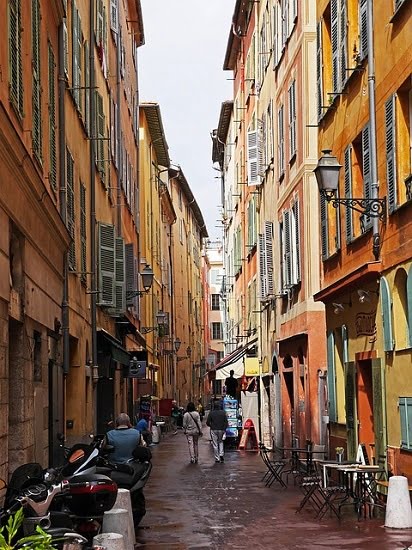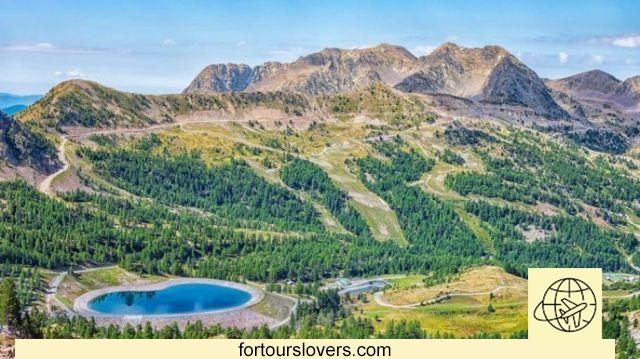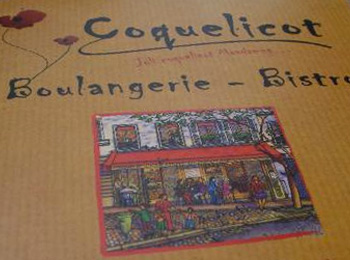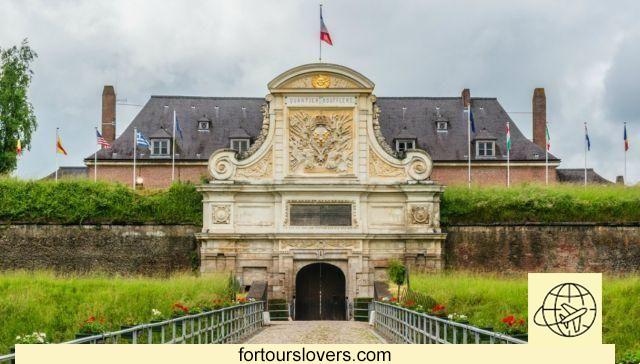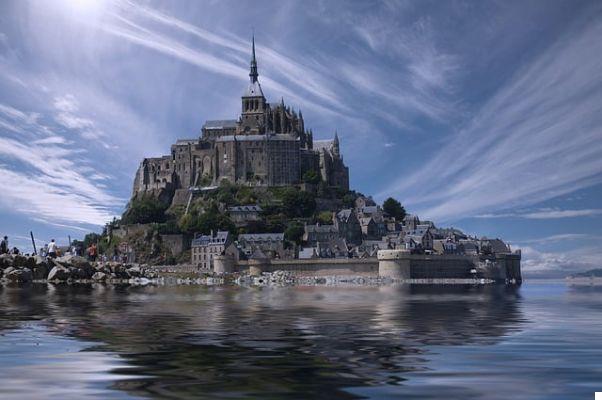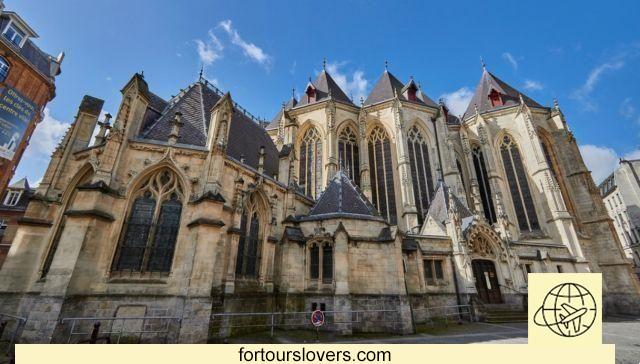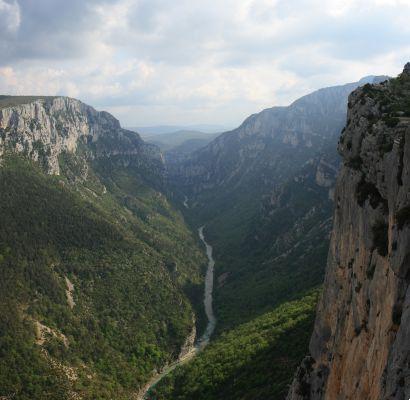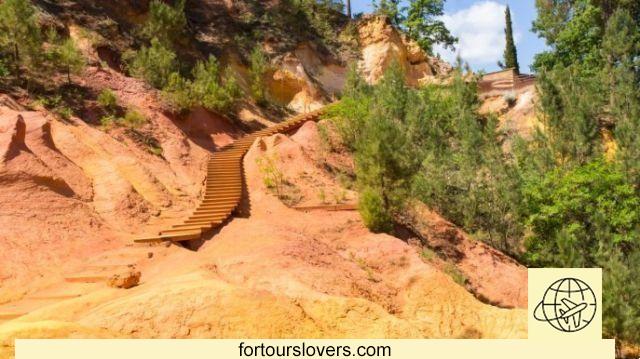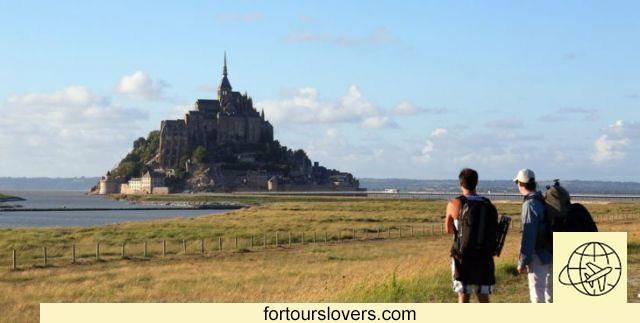
Normandia
12 things to do and see in Normandy and 2 not to doWhile there are no complete tourist destinations capable of satisfying any type of traveler, there are places in the world that come very close. Normandy is certainly one of them. The beauty of the coastal landscape, the rural hinterland, sui generis atmospheres of Caen, Rouen and Le Havre, Without to forget abbeys, monasteries and countless gastronomic specialities make this region of northern France an ideal destination for very different tourists. Furthermore, compared to the past, important steps forward have been made for everything concerning tourist accommodation, with undoubted economic and social benefits for the entire region. On his side, then, Normandy also has the history: the memory of the Allied landing in June 1944, still today attracts thousands of visitors from all over the world, eager to know the places of one of the bloodiest and at the same time decisive episodes of the twentieth century. In the following story we will try to take into account such wealth. Happy reading.
1 Peninsula of La Hague
Our journey to discover Normandy starts from the Manche (Manche, in French) the westernmost of the 5 departments into which the region is divided. First stop the Peninsula of La Hague. The rugged and wild nature of the area mainly attracts surfers and trekking lovers. Several things to see. We report en passant: le cliffs of Nez de Jobourg, the small Port Recine and Nacqueville Castle. The cliffs of Nez de Joubourg (see photo), at the western end of the peninsula, are the second largest attraction in the Channel after the Abbey of Saint-Michel. 128 meters high, they represent one of the most important hubs of Atlantic maritime traffic. At the foot of the cliffs there are several very deep caves which, if desired, can be visited together with local guides. Recine, on the other hand, is the smallest port in France. Hence its peculiarity, which contrasts enormously with the capacity of the port of the nearby city of Cherbourg where, instead, thousands of boats, including yachts and cruise ships, dock annually. Finally, Nacquiville, a Renaissance castle from the early 500th century to which a beautiful park-garden with lakes, waterfalls, flowers, palm trees and other ornamental plants was added in the XNUMXth century. From Nacquiville the GR233, the most famous excursion route of the peninsula. About eighty kilometers, it crosses the entire territory from north to south, including magnificent landscapes, pastures, dry stone walls, high cliffs and wonderful inlets. Therefore, together with thetechnical clothing, woe to forget the camera.
2 Granville
After Cap de La Hague it is the turn of Granville, one of the most famous seaside resorts in all of France. Considering the neighboring towns (Saint Pair Sur Mer, Jullouville, Donville des Bains etc.), there are over 20 kilometers of coastline available to tourists, many of whom come from Paris thanks to theefficient rail link to / from the French capital. If we then go up the coast to Portbail, the number of bathing kilometers becomes many more, which explains part of the great tourist success of this stretch of coast. The other part, however, is due to the presence of the casino in the old part (Haute Ville) of Granville (not surprisingly, the town is renamed "Monte Carlo of the north"). But that's not all because the charm of Granville contributes to being there hometown of Christian Dior. In the house where the great designer spent all his youth, a museum has been set up with a good number of visitors. The numbers, of course, are not the same as those of the city Carnival which, we recall, is one of the most important in the transalpine nation. Finally, in the surrounding area we point out Coutances, about thirty kilometers from Granville. The town is famous for the Cathedral, built in the thirteenth century in the highest part of the city. From the tower of this church you can see a magnificent view that alone is worth the visit. Not to be missed!
3 Abbey of Saint Michel
With over 2,5 million visitors a year (some estimates even speak of 3 million) the Abbey of Saint Michel is the second most visited place in France after the capital Paris. The record, however, is far from recent. Already in the Middle Ages this place was a destination for pilgrimages from all over Europe. There are several reasons for the site's extraordinary popularity. The first is its mythical origin. It is said, in fact, that the construction of the church was ordered by the Archangel Michael himself, who repeatedly appeared in a dream to the bishop of Avranches, Saint Aubert. The period, it should be remembered, is the beginning of the eighth century, to be precise 708, the year in which the first church was built. Obviously, the extension works continued throughout the Middle Ages, giving the abbey the unmistakable Gothic-Norman style. 157 meters high abbey, and located on the top of an islet around which, over time, a small village arose, in turn surrounded by mighty defensive walls. Even today, Saint Michel, in addition to being an abbey, is a village dotted with typical shops, restaurants and with its widespread hospitality. The other reason behind the local charm is the high tide phenomenon. All around the abbey, in fact, the tides fluctuate up to 15 meters, which is why, for years, their progress has been constantly monitored. Clearly, the necessary infrastructures have been created over time to make the site visitable in every season of the year: with fog and sun; at high or low tide. And here we come to the third reason that made the place successful: the arrival UNESCO protection of 1979. Finally, in 2001, the return after centuries of monks and nuns of the Monastic Fraternity of Jerusalem (immediately after the French Revolution, in fact, the Abbey was converted into a prison). For more information on history, land connections and tide trends, consult the place: www.ot-montsaintmichel.com (English version available).
4 Costa di Madreperla (D-Day places)
As we said at the beginning, the beaches and places of the Normandy landings have over the years become one of the main tourist attractions in France. There are many visitors who every year, especially during the summer months, retrace the locations of the Coast of Nacre, the Mother of Pearl Coast. Utah, Omaha, Gold, Juno and Sword are the beaches (Plages de Debarquement) where, on June 6, 1944, the British, Americans and Canadians landed to free France from Nazi occupation. The toll of blood was enormous and, as always in war, it was not only the allies who remained on the ground but also many German soldiers. Between cemeteries, museums and installations there are so many things to see. Here we limit ourselves to mentioning only a few: the Liberation Museum of Cherbourg; there Saint Marine church (approx. 40 km southeast of Cherbourg) with the mannequin of the American soldier John Steele hanging on the bell tower; and the American Cemetery of Colleville-sur-mer (on the beach of Omaha Beach). The visit of the impressive Normandy American Military Cemetary and Memorial it is essential to reconstruct one of the bloodiest pages of history of the 900th century. The cemetery is open to the public every day, except December 25 and January 1. From April 15th to September 15th it is open from 9:00 to 18:00; the rest of the year from 9:00 to 17:00. For more information consult the place: www.abmc.gov/cemeteries-memorials/europe/normandy-american-cemetery.
5 Bayeux
Speaking of the D-Day places we mentioned the large number of city museums dedicated to the Normandy landings. One of these is located in the pretty town of Bayeux, about 15000 inhabitants in the department of Calvados and Orne. It is called Museum Memorial de la Battaille de Normandie and collects various finds on the Allied landing in '44. But Bayeux is worth a visit for other reasons as well. There Cathedral, for example: built in the XNUMXth century, it is unanimously recognized as one of the most beautiful in France (see photo). The bishopric and the other palaces built between the 400th and 700th centuries also bear witness to the importance of the architectural heritage of this small town, largely spared from the destructive fury of the Second World War. However, the most important find is the very famous Bayeux Tapestry. It is a tapestry of over 70 meters on which the different phases of the conquest of England by the Duke of Normandy William I have been embroidered. There are those who have rightly seen in this find an ancestor of comics, also for the frivolity of some of the scenes told. Obviously what stands out is the extraordinary documentary value of the work, not surprisingly inserted byUNESCO international convention against doping in the sport in its special Memory of the world register founded in 1992. Per more information on the tapestry and the museum space dedicated to the Normandy landings consult the place: www.bayeuxmuseum.com.
6 Caen
THEmost important airport in Normandy, as well as one of the oldest universities in France: a few hints are enough to explain the present and past importance of Caen, capital of the Calvados department. A city of just over 100.000 inhabitants, deeply marked by the events of '44. The inhabited center, in fact, was completely razed to the ground in the two months of furious battles between allied and Nazi troops. The old part, however, was almost completely spared, which allowed the preservation of its splendid monuments. Monuments that mostly date back to the XNUMXth century, built on the impulse of William the Conqueror, the hero of the battle of Hastings of 1066 with which the Kingdom of Normandy extended to the English coasts on the other side of the Channel. William I ordered the construction of the walls of Caen (Chateau Ducal) and of the two abbeys, respectively reserved for men (Abbaye aux Hommes) and women (Abbaye aux femmes). Even today, all three of these monuments represent the main points of tourist interest in the city. Especially the two abbeys: in the first, also known as the Church of Santo Stefano, Guillarme le Conquerant himself was buried until 1563; in the second, instead, known by the name of La Trinité, his wife Matilde of Flanders. Also worth a visit Caen Memorial and church of San Pierre. Inaugurated in 1988, the Memorial houses countless historical artifacts from the Normandy landings plus numerous other testimonies on international conflicts from 1918 to today (www.memorial-caen.fr). As for the church of San Pierre, it dates from the XNUMXth-XNUMXth century and is famous for its bell tower of about 80 meters (see photo).
7 Coast of Flowers
To the east of the Côte de Nacre, the towns of the Côte Fleurie is Coast of Flowers. Cabourg, Deauville, Dives-sur-mer and Honfleur these are the main stops on this coast which reached the peak of its tourist fame in the second half of the XNUMXth century. Very famous, for example, is the Cabourg promenade named after Marcel Proust. The great French writer was a frequent visitor to the locality, present in one of his most famous novels, “In search of lost time”, with the name of Balbec. In Cabourg there is also a casino while Deauville is famous above all for the horse auctions attended by buyers from all over the world, and for theAmerican Film Festival which since 1975 takes place in the first week of September. Honfleur, instead, it is the typical fishing village of northern France (see photo). Very characteristic is the harbor area (Vieux Bassin): fishing boats, yachts and sailing boats are the backdrop to art galleries, restaurants and clubs of all kinds where you can eat and drink very well. Not far from Honfleur is the spectacular Normandy bridge which we will discuss more fully in the next point.
8 Normandy Bridge
Built between 1988 and 1995 on Pont de Normandie has significantly shortened the distance between Honfleur and Le Havre to 25 kilometers instead of the 60 previously needed. An engineering work that is not only useful but also aesthetically gratifying to the point of becoming, within a few years, one of the main tourist attractions in the region. The iron and steel structure, just over 2 kilometers long, also has a pedestrian lane and a bicycle lane next to the driveway. The first two are free to use and guarantee a spectacular view of the Seine and the surrounding hinterland. The car lane, on the other hand, requires the payment of a toll. Alternatively, still from Honfleur, it is possible to set sail aboard a boat that passes right under the bridge. To be seen!
9 Le Havre
A journey to discover Normandy cannot be excluded Le Havre, the first city by number of inhabitants (about 190.000) of the entire region. It is not the only record: the port, with an employment induced by far exceeding 10.000 units, is the second most important in France after Marseille. It is certainly the first for commercial traffic and transit of contaneir, which gives an international dimension to a city that, it should be remembered, was completely destroyed by the clashes following the Allied landing in '44. And here lies the real attraction of Le Havre. In fact, immediately after the war, the reconstruction of the city center according to the directives of Auguste Perret, unanimously recognized as one of the greatest architects of the twentieth century. In 2005 theUNESCO international convention against doping in the sport entered the historic center of Le Havre among the World Heritage sites, defining Perret's work “an exceptional example of post-war urban planning and architecture, based on the innovative exploitation of the potential of concrete“. Several things to see: the church of Saint Joseph, also this restructured according to the guidelines of the "cement poet" as Perret was nicknamed; there Cathedral, with its mix of Gothic and Renaissance (see photo); the Museum of Modern Art, the ancient fishing port of Sainte Andresse, and above all theOscar Niemeyer space, better known as “le Volcan” for its shape that would recall that of a volcano. Together with the bell tower of the aforementioned church of Saint Joseph, this futuristic two-storey structure built in 1982 by the Brazilian architect Oscar Niemeyer, marks the cultural and artistic life of the city between theatrical performances and musical events. For more information visit the place: www.levolcan.com.
10 Étretat
Il coastal landscape it is one of the most fascinating reasons of Normandy. We saw it with the cliffs of Nez de Joubourg in the peninsula of La Hague (see point 1), we are going to see it now with the Falaise d'Aval in town of Étretat, 30 kilometers north of Le Havre. Thanks to the natural setting represented by Courtine, Manneporte, Aguille Belvalle and the other limestone cliffs that follow one another along the plateau of the Pays de Cux, Étretat has transformed into a renowned seaside resort, freeing itself from the past of a seaside village. The pebble beach, surrounded by the imposing cliffs just described, does the rest, attracting thousands of visitors, especially during the summer. In the other seasons of the year, however, it is the hiking trails of the plateau that especially attract trekking lovers. Continuing north of Étretat, along the Alabaster Coast (Côte d'Albâtre, in French), there are many other places that deserve a stop. We report, in passing, Fecampe, which is only 16 kilometers away, and Dieppe which is approximately 80 kilometers away. To be seen!
11 Jumièges Abbey
In Normandy there are masterpieces of nature such as the cliffs of Étretat and other masterpieces, however, which testify to the greatness of man. L'Jumièges Abbey, about 30 kilometers from Rouen (see next point), belongs by right to this second category. To the point that it is reductive to limit the extraordinary beauty of this place to the regional context only, not surprisingly considered the most beautiful ruin in France. And yes, because visiting the Abbey of Jumièges means going through about 9 centuries of history: more precisely from the IX, the period in which the Abbey of Notre Dame was built, to the XVII, the period in which the last works of expansion of the structure before the Benedictine friars left the next century. The complex is accessed from a XNUMXth century portico, a wonderful example of Gothic architecture. Once inside you can see the already called Notre Dame Abbey, with its two towers of about 50 meters each, and the annex church of Saint Pierre which has interesting pre-Romanesque elements. Also full of charm park all round. About 15 hectares of greenery where you can still see the articulated system of terraces built by the monks who lived in the convent. The Abbaye de Jumièges is open every dayi (except January 1st, May 1st, November 1st and December 11th, December 25th). From 15 April to 15 September it can be visited from 09.30 to 18.30. From 16 September to 14 April from 09.30 to 13.30 and from 14.30 to 17.30. Animals are not allowed. For more information on history, route and entrance fees consult the place: www.abbayedejumieges.fr.
12 Rouen
The last stage of our story is Rouen, capital of the Seine-Maritime. The city has just over 100.000 inhabitants (500.000 considering the metropolitan area) and is an important port. In fact, despite being 90 kilometers from the coast, thousands of boats each year sail the waters of the Seine “departing from” or “arriving in” Rouen. It was not only trade that benefited, but also the tourist economy. Just think of a big event like “Armada”, international gathering of sailing ships from different countries around the world. In 2019 there will be a new appointment of this important event which, thanks to the impressive organizational effort, attracts thousands of tourists to the city (www.armada.org). And, of things to see, especially in the old part of Rouen, there are really many. Half-timbered houses, cobbled streets, churches and museums everywhere: visiting Rouen is one of the most rewarding experiences of a trip to Normandy. Do not miss the Notre Dame de l'Assomption Cathedral, one of the most important churches in France, seat of the city archdiocese. A significant testimony of the medieval architecture of Normandy in which the three towers stand out: the Tower of San Romano Torre di Burro (so called because it was built with the proceeds of the indulgences for the consumption of butter in time of Lent) and the Lantern Tower, 151 meters high. It's not over because Rouen is also famous for being the city where it was burned at the stake Giovanna D'Arco. The martyrdom of the heroine of France took place on May 30, 1431 in the Place de Vieux Marché, the old town market square. They are also worth a visit there church of Saint Maclou e Gros Horloge, the Renaissance arch in the homonymous square surmounted by a XNUMXth century astronomical clock. As for museums, we said, there are many: "Fine Arts", "History of Medicine", "Education" etc. For further information on Rouen's museum spaces, consult the website: www.rouen-musees.com.
1 Don't underestimate the danger of the tide in Mont-Saint-Michel
We have already talked about it (see point 3) but repetita iuvant. The sea around Saint-Michel retreats for kilometers (low tide) with great speed and, with the same speed, returns there (high tide). So better do not underestimate the risks associated with the sudden trend of the tides, perhaps venturing into solitary excursions. Not to do!
2 Watch out for tourist traps
In an area as large as Normandy there is certainly no shortage of clubs, taverns and restaurants. In some you eat well, in full respect of the regional gastronomy; in others, however, the cuisine is definitely below expectations. On closer inspection this happens in almost all tourist resorts and, more generally, a lot also depends on the value that is attributed to food on vacation. If you are faithful to the motto "eat local", then it is good to choose without haste where to eat, perhaps with the help of online reviews and / or the advice of someone from the place. In the case of Normandy, for example, there are those who even suggest following the trail of trucks. From the series: if you want to eat well, abundant, spending the right amount, trust the truck drivers!




